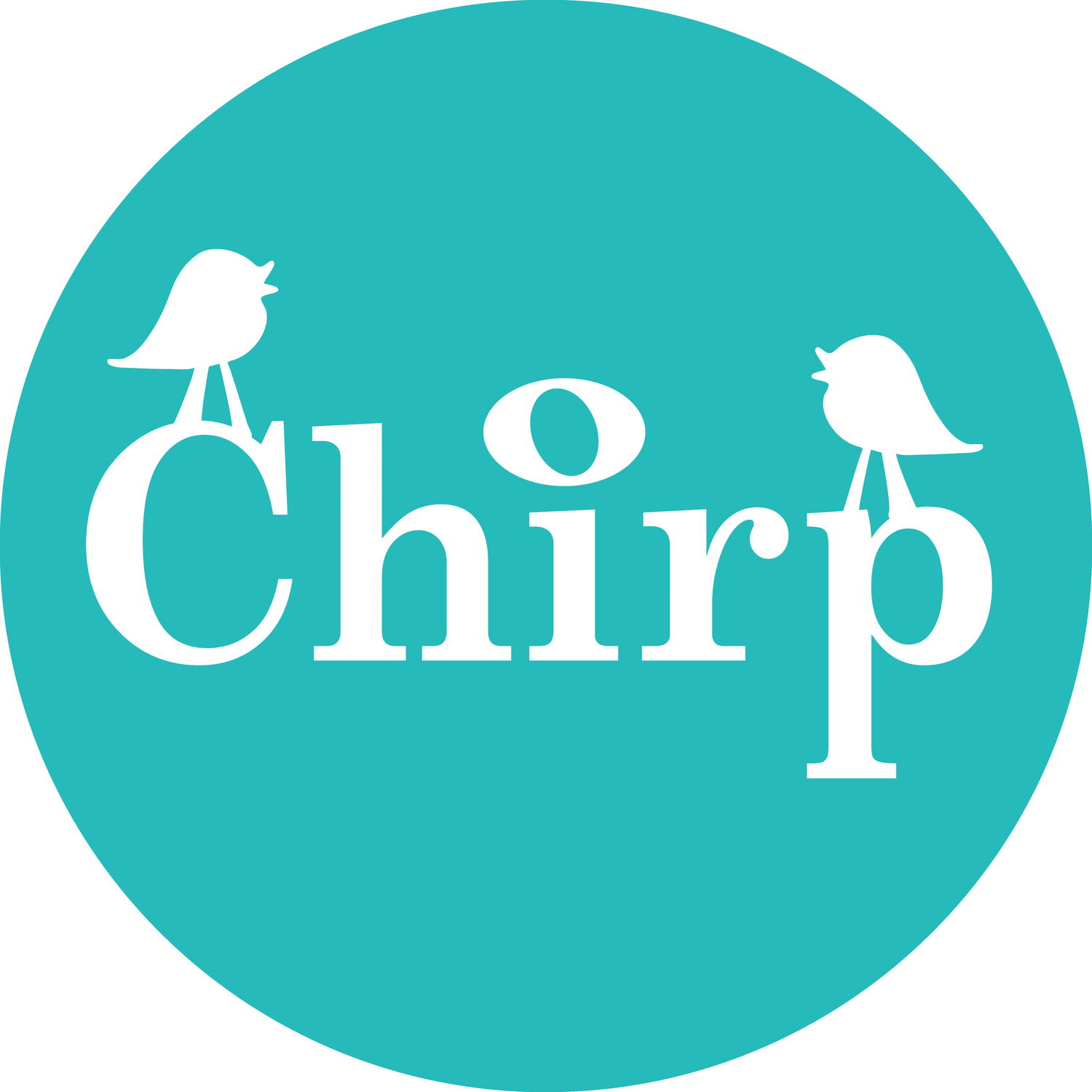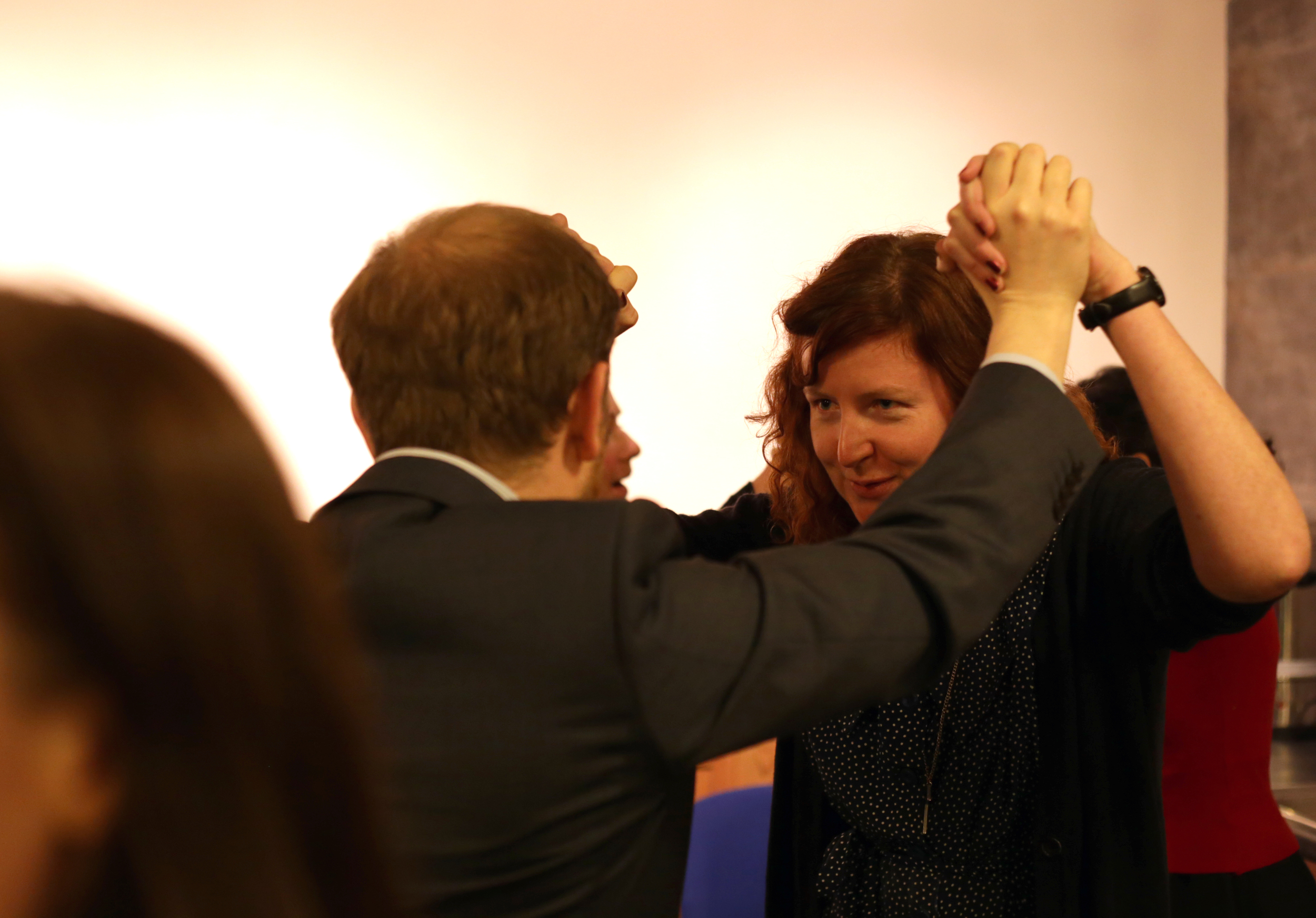It was an honour to feature on Dr Spencer Holt’s fantastic podcast, Small Things Make A Big Difference. Kamala shared her insights into how to be more intentional in your communication, the power of pausing, and why it’s worth being curious about not only about who you are but who you could become.
Storytelling 3: Tips for a compelling narrative
In the first two parts of our series we looked at the science behind storytelling, and how to jump in and create your own. And in this post we share a few tips to help you hone and maintain your storytelling habit.
Perhaps the world's (and our own) infatuation with storytelling will fade over time, but stories themselves are no flash in the pan. They speak to our quintessentially human desire to communicate. And at their best, elevate the simple stuff of life to the utterly captivating. So here they are, a few of our top tips.
Storytelling 1: The Science of Storytelling
Not only ones we seek out, but others we're confronted with whether we like it or not. True stories, fictional stories, fictional stories purporting to be true stories… They feature in every aspect of our daily lives, from business to politics to leisure.
And for good reason. Storytelling is an extremely powerful tool. It alters the activity in your brain, influencing not only what you think and feel, but how you act. Which is quite useful if you’ve ever needed to convince someone of something – whether it’s that they should donate to charity or hire you for your dream job.
Why singing improves well-being
I'm sometimes asked why we use singing in our sessions. I'm not surprised – and not only because singing is, ahem, a touch unusual in leadership development. Thing is, however natural it might be, singing comes with baggage. It’s always a loaded concept, whether that's with feelings of joy or outright fear, or something in between.
And actually, in our work, all of that is useful.
That element of fear and exposure can help you notice how you respond to risk and uncertainty. And do so in a way that’s not only immediate, but that is all-encompassing: physically, intellectually and emotionally. In pulling you out of your comfort zone, singing can take you to a place of stretch. And that, we know from recent research, is where most of us learn best and most memorably.
It's even likely that, because it’s a bit risky, singing actually increases your resilience. We're currently collaborating with neurobiologists at Ashridge Business School to find at whether public singing creates templates in your brain that help you tackle other challenges more easily. We'll keep you posted on our findings!
So I embrace that element of fear. And one of the things I find fascinating about singing is how quickly it can take you from that place of fear to one of connection, trust, and well-being. And for lots of people, it can happen within the space of a single song.
There’s a growing body of research into the impact of singing on well-being. We now know, for example, that group singing raises your pain threshold. And that it releases oxytocin into your bloodstream, which helps promote feelings of trust and safety.
Singing also enables fast social bonding. It breaks the ice so you feel closer as the group, even if you don’t yet know anything about each other. The team behind this research also suggest that the social bonding effect of singing may even have been vital in enabling modern humans to sustain larger social networks than their evolutionary ancestors. And that, in turn, may have helped them colonise risky environments worldwide. Those early singers were no slackers.
When you sing with other people your heartbeats sychronise – which may explain why singing together can create a sense of shared perspective. Choral singing can certainly improve mood, enhance quality of life, and lead to greater happiness, reduced stress and better emotional well-being. But, whether you sing alone or with others, the simple act of singing raises your heart rate variability, which in turn improves both your well-being and social cognition.
And we think that singing with someone else improves your social intelligence. with, again, an impact on well-being. We're currently developing research with neuroscientists at University College London to examine brain activity during joint singing, and its impact on interaction and well-being.
As you might have gathered, I find the science fascinating. I find it hugely exciting to understand what happens in our brains and bodies when we sing, and how we can use that to enhance our lives at work or at home.
But, in some ways, we don’t need the science.
Singing is thought to be how we first communicated, even before we had speech. It's found across the world – a truly global phenomenon. It's a fundamental to the human condition. So why not give it a whirl? Even if you find it stressful you'll probably be boosting your resilience! And all you need is yourself.
This piece is an excerpt from our session for Roffey Park Institute's Well-being Forum in November 2017. Do drop us a line if you'd like to find out more about the session or our research.
Get to the point – tell me a story
It's not a contradiction. We know from experience (and now science) that stories are more effective than facts if you want someone to connect with your message. Storytelling helps engage people in your vision, from one customer to an entire nation. Or at least enough of a nation to swing an election.*
The term 'storytelling' has been bandied about so much it's in danger of not living up to its own myth. (Ah, the irony.) But to me, it's simply a way of harnessing the emotional capital that lies at the heart of what you do, and why it matters.
A compelling story communicates the emotional core of your message. When you hear it, it creates a simulation of reality in your brain. That helps clients and colleagues to act on what they've heard, because they're engaged both intellectually and emotionally. They understand why they should care. And that's a powerful tool.
If you're interested in the neuroscience of storytelling, you might like to read this. And if you're interested in the practice, you might like to come to our Effective Storytelling session on Saturday 22nd October in Central London. No votes, just stories.
*Okay, so Michelle Obama isn't President. But she is a masterful, and vote-winning, storyteller.
Find out how to tell your own compelling stories. Sign up to download our free Chirp Workbook.
Why listening to Moaning Minnies is vital for success
Well, all right. Maybe not moaning minnies – but a complaint is a gift. And, when delivered to a business (rather than your mum), the lucky recipient can use it to improve products and services.
It seems we’ve got quite a lot to complain about, if last week's UK Customers Satisfaction Index is anything to go by. The annually published index shows that satisfaction has fallen for the second year running. It’s not all gloomy, of course – some companies continue to inspire adoration. Many others, though, just aren’t showing us the love.
Numerous organisations now describe colleagues in other departments as internal ‘customers’, who also require superb service. Whether internal or external, that service can be improved by actively listening – even when it involves the odd moan.
A failure to listen – and respond relevantly – is not only irritating, but pointless. Neither party benefits in the long term, and both may leave with raised blood pressure in the short term.
Ryan Block’s recent recording of his cancellation call to Comcast demonstrates this beautifully – and painfully. The Comcast employee clearly feels he must follow the script at all costs. He harangues Block, repeatedly prevents him from speaking, and refuses to acknowledge any answers he does manage to give.
The employee gives the impression that his life depends on Block not cancelling the contract. Perhaps his job does. Either way, it creates a deeply worrying impression of the organisation’s culture.
The conversation is astonishing – but perhaps not unusual. Most of us have had conversations at some point in which our presence has felt superfluous, whether with customer service reps or colleagues. As our opinions, knowledge or experiences fall on deaf ears, we may become disinclined to give the gift of feedback. And, if we can, we may resolve to take our custom – or our CVs – elsewhere.
Creating space for each other to speak, listening to what’s said rather than what we want to be said, and responding relevantly is a much more fruitful approach. Be alert to what’s not said, too. Non-verbal signals are often excellent indicators of whether the other party is actively engaged. Remember to be aware of yours, too – none of us operates in a vacuum.
By actively listening, and responding relevantly in our interactions, we can raise satisfaction among both colleagues and customers. And when a culture of listening extends right through from CEO to intern, and product design to customer, it creates a virtuous circle that both staff and customers will celebrate.
We hope you hear some valuable insights this week. Here at Chirp we run workshops to help colleagues both listen and be heard. If you’d like to find out more – or indeed, have some feedback for us – please do get in touch. We’re all ears!
Don't be a hermit – interact with impact with these five tips
Human interaction is at the heart of work. Its impact is everywhere – from process to productivity, outcome and enjoyment. Unless, of course, you’re a hermit.
Despite its centrality, that interaction can often feel unpredictable, ineffective and draining. After all, you can never guarantee someone else’s behaviour. You can, however, ensure your own is more influential, clear and effective.
Below are five tools to help you make the impact you choose in your daily interactions. Yes, they take practice, but they can make a crucial difference – particularly if you’re leading change. Either way, they’ll help you achieve your outcomes without wasting time and energy. No need to become a hermit, then.
1. Don’t look down!
Look up, make eye contact, then begin. Taking that moment to connect tells people you're fully present – and that your contribution is worth their attention. This is particularly useful in presentations and when opening meetings. Good eye contact also signals that you’re engaged with their response.
It might sound obvious, but it’s surprising how many of us launch straight in, without first establishing a connection. In so doing we risk throwing away our words on a distracted audience, silently dismissing their contribution, and reducing our impact.
2. Stand your ground
Yep, even if you’re seated. If you’re standing, keep your feet hip-width apart. Feel the ground through your feet. Resist the urge to drop one hip or place your weight on one leg. Again, obvious enough, but not always easy to avoid in the moment. If you’re sitting, feel the ground evenly through both feet. It can be tricky in a skirt, but worth doing whenever possible.
Feeling the ground through your feet does what it says on the tin; it helps you feel more grounded and present. It also stabilises your posture, preventing you either feeling or looking like you’re in 'fight or flight'. And that in turn creates a more powerful presence.
3. Abdominal breathing
Imagine a pair of bellows. As the air goes in, they expand; as it leaves, they contract. The same idea applies to abdominal breathing, ideally through a slightly open mouth. As you breathe into the bottom of the lungs the abdomen expands; as you breathe out it contracts. The most important thing, however, is to breathe out first!
Breathing is critical both to how you feel we’re perceived and how you are perceived – influencing how you behave and others respond. Most people take shallow breaths and/or hold their breath, particularly when nervous or challenged. Abdominal breathing reverses this so you operate more effectively. It also helps you speak more clearly and avoid swallowing words. You’ll feel better, be perceived more positively, and imbue your words with the impact you intend.
4. Take the space
Being aware of the space around you – above, below, in front and behind – can transform the impact of your presence. Unfold into that space. Release your arms from your sides. Broaden your shoulders away from your ears. And keep your feet hip-width apart. Hunched shoulders, crossed arms and a caved chest don’t just restrict breathing and create tension. They also make you physically smaller – impacting on your personal presence and suggesting that you don't want to be there.
So take the space, expand into it, occupy it. Your posture will improve. Your chest will open and you'll breathe more easily. You’ll create a stronger presence. And you'll signal to others that you are ready to be seen and to engage.
5. Channel your inner ventriloquist
Okay, not really – but imagining that the stomach (venter) is powering your speech (loqui) can help you project without straining or shouting.
Most people reach forward with their head and neck when they want to be heard. Bring them back instead so they’re aligned with your spine. Relax the throat – it will tense if you shout – and, when you speak, engage your lower abdominals. Projection can take some practice, and works best in conjunction with the other tools. Once cracked, however, you'll deliver your ideas with impact. It's also brilliant sore throat prevention in noisy pubs!
Want to learn more? Download our free Chirp Guide to find out how to use your voice more effectively in meetings, pitches and presentations.
How to avoid dysfunction at work – tips for the (fictional) BBC
My Wednesday evenings have been brightened recently by the arrival of W1A. Set in a fictionalised New Broadcasting House, the BBC comedy stars Hugh Bonneville as the Beeb’s unfortunate Head of Values. It's a gloriously dysfunctional portrayal of the BBC, as enjoyable as it is excruciating.
First, a disclaimer. I used to work at the BBC – alongside many talented, sparky colleagues wholly unlike those in W1A. Yet there are elements of the show that feel deliciously real. And, I admit, I watch with all the delight of being in on the joke.
But these characters aren’t the preserve of the BBC. In fact I’m sure their recognisability greatly contributes to the show’s success. Most of us have met them at some point in our careers, wherever we work. And, sadly, they’re not nearly as entertaining in real life.
What Sir Tom Jones knows about leadership
I have a confession: I’ve finally succumbed to BBC1’s The Voice. I blame the chairs. They’re huge, they light up, and they swivel on demand.
Though clearly thrilled to be picked via a revolving chair, the real draw for the contestants is superstar coaching. The chance for expert leadership from people who’ve been there, done it. And kept doing it.
Fervent aspiration with world-class authority is a compelling mix. The judges clearly know their stuff. But the big question is whether they can empower their teams to achieve the same. Essentially: will they be inspirational leaders?
Each coach has a different style, but it’s Sir Tom Jones that I’ve been watching closely. He knows his experience is an effective selling point. And barely a moment passes without another “starry collaboration” anecdote. (While we all wonder if there’s anyone he hasn’t sung with…)
Last week Sir Tom demonstrated what he's learned about leadership during all those years at the top. That it’s not enough to tell; you must also show. You must lead by example. By doing just that, he transformed his team’s uncertain, lacklustre delivery into a passionate, meaningful performance. Something had suddenly ‘clicked’, within just a few minutes.
One of my criticisms of the show until now has been that we've rarely seen the coaches up on stage. There’s something incredibly powerful about demonstrating excellence in the moment, rather than relying on previous success. Executed consistently, it creates clarity of purpose, avoids misunderstandings, and inspires observers.
Sir Tom seems to know that. Perhaps it's something he learned from all those musicians who inspired him. Either way, leading by example – modelling attitudes, behaviours and practice – is a powerful tool. And that’s the case whether you’re in front of six people or 6.95 million.
Want to learn more about how to be a leader who enables as well as inspires? Sign up to download our free Chirp Guide.
Spring clean your presenting style
It looks like Spring is finally here so, in honour of the season, we're sharing five tips to rejuvenate presentations. A Spring clean, if you will. We hope they help you present with natural charisma and ensure your every word lands.
1. Breathe out
Ignore the advice ringing in your ears to take a deep breath. For most of us that results in either hyperventilation or heavy breathing – neither a good look when you need to impress. Breathing out first should help make your next inhalation deeper and more regular. It will calm you down if you’re nervous, and help you project more effectively either way.
Try it: as you're preparing, just before you start, and as you're changing slides.
2. Catch flies
Okay, not literally – but do breathe in and out through an open mouth. (Once referred to by a client as 'catching flies', in case you wondered.) It can be counter-intuitive, but it will make a significant difference. You'll breathe more deeply and with less effort, so you're free to focus on content. It should help to keep your facial and neck muscles relaxed too.
Try it: as you're preparing, just before you start, and a few times during the presentation.
3. Pause
Is it easy? No. Does it help? Yes. Will a split-second will feel like an eternity? Well, probably. It won’t be, though, and that brief pause will help you be present in the moment, marshal your thoughts, and ensure your audience is still engaged. It’ll also help them to take in what you’re saying so your messages land.
Try it: just before you start, and then at appropriate moments during the presentation.
4. Huh?
The second half of a sentence generally makes the whole meaningful. Not wise, then, to throw it away – whether through nerves or enthusiasm. Yet word swallowing is one of the most common issues we help with. Full, as opposed to shallow, breathing will help; as will simple awareness. It’s amazing how much more effective we are when we speak deliberately.
Try it: five minutes before you start, and then a few times during the presentation.
5. Aim for alignment
We are most persuasive, convincing and effective when we show that we mean what we say. So don’t just tell – be. Aligning your delivery with your meaning will imbue your words with the weight they deserve. So don’t undercut difficult messages with a nervous grin; and give grimaces a wide berth when explaining brilliant plans. Sounds obvious – yet it’s so often forgotten in the heat of the presenting moment!
Try it: before, during and after!
Want to learn more? Download our free Chirp Guide to find out how to use your voice more effectively in meetings, pitches and presentations.
What lies beneath? Get your brain scanned and find out!
'B0005622 Enhanced MRI scan of the head' by Mark Lythgoe & Chloe Hutton / Wellcome Images, licenced under CC BY-NC-ND 2.0
We're hugely excited to be working with neuroscientists at University College London (UCL) and Ashridge Business School to investigate the science behind singing. The UCL pilot will be one of the first in an emerging field that explores why social interaction is so important to health and well-being. And the Ashridge research will valuably contribute to our understanding of both resilience and learning. Both have potentially exciting applications in the workplace, education and health.
We're recruiting potential participants now while we nervously await the outcome of our funding bids. So, if you've ever fancied finding out what's really going on inside, now's your chance! We're looking for participants of all backgrounds, and particularly scientists.
UCL RESEARCH
Using fRMI scanners, we'll look at what happens in the brain when you sing, how it differs from speech, and why many people find that singing together creates social bonds.
We're looking for 30 adults who:
consider themselves to be novice singers
haven't had any training, including singing in choirs
don't consider themselves entirely tone deaf!
are aged between 18 and 40 years
aren't claustrophobic – scanners are a fairly tight fit!
are based in or can easily get to central London
On the day, you'll start off by singing with Kamala face-to-face. You'll then get in the scanner, and sing with her (via headphones) while your brain activity is scanned. It'll take about an hour of your time.
ASHRIDGE RESEARCH
Using heart rate variance monitors, we'll look at what happens in the brain when you sing in public, and whether it enhances personal resilience.
We're looking for 30 adults who:
are novice, amateur (e.g. sing in choirs), or semi-pro/professional singers
are aged 18+
are based in or can easily get to central London
On the day, you'll sing together, led by Kamala. You'll then have an opportunity to lead each other in singing, and sing a solo (yep, a solo!). You'll wear a small heart rate variance monitor throughout all the activities. It'll take about a day of your time.
If you're interested in taking part in either study you'll need to have a quick chat with Kamala over the phone so we can check you're happy to go ahead. Do drop her a line if you'd like to find out more, with no obligation to take part!


![Image by Ali Shaker/VOA [Public domain], via Wikimedia Commons](https://images.squarespace-cdn.com/content/v1/563f8bf2e4b0ff7145098067/1472151695809-JC7V689SLIXUWSML5012/Michelle+Obama+at+the+DNC+July+2016)





